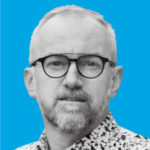
Digital technology has the potential to be the great equalizer, delivering content and experiences to people regardless of where they live or even how much money they have. But it hasn’t always worked out that way, and that’s where four-year-old Digital Learning Day comes in. Presented by the Alliance for Excellent Education, it’s a one-day “celebration” of best practices, tools, and teachers incorporating digital education into their classrooms. Held on March 13, Digital Learning Day this year included events at hundreds of sites across the United States, anchored by an in-person program at the National Board for Professional Teaching Standards’ Teaching & Learning conference at Washington, D.C.’s Walter E. Washington Convention Center.
“At the heart of Digital Learning Day is this emphasis on equity — the equitable access to technology across the socioeconomic income scale,” said Kamila Thigpen, the Alliance’s digital learning policy and advocacy manager. “Equity in how technology is being used, and helping to connect teachers, because we have seen that there’s a real need, a desire, and a thirst among educators to see what’s happening in other places.”
Digital Learning Day began with a 75-minute session featuring demonstrations of new interactive education products, followed by nine concurrent hour-long roundtable workshops led by leaders in the field of education technology. The program culminated in a 75-minute online broadcast live from the stage at Digital Learning Day that, appropriately enough, was called Digital Learning Day Live! About 600 people were in the audience on site, Thigpen said, while another 2,000 or so watched the virtual broadcast.
Moderated by Rehema Ellis, chief education correspondent for NBC News, Digital Learning Day Live! spotlighted education-technology initiatives at a socioeconomically diverse cross-section of public schools in Arkansas, California, Texas, and Maryland — interspersing pre-shot video profiles with onstage interviews with officials, teachers, and students from the schools. “The point was really to tell those stories,” Thigpen said. “To provide an opportunity and a platform for other educators or school leaders to be able to peek inside those different locations and learn from what was working.”
There were also nods to the program’s large virtual audience. Introducing Digital Learning Day Live!, for example, Alliance President Bob Wise asked the online audience to tweet their answers to the question “How do you think teachers should use technology to empower students?” And users tuning in via the Alliance’s digital platform could answer poll questions such as: “If you are a teacher or former teacher, have you had the opportunity to observe student-centered digital learning in a school or classroom outside of your district?”
“We had folks on the ground actually capturing and live-tweeting what was going on [at the D.C. program] in real time,” said Emily Rasowsky, a managing strategist at Social Driver, the Alliance’s digital agency. “What that does is it not only builds up a community of folks who are actually at the event — so, the people who are using the hashtag when they’re at the big D.C. event — it also captures the audience of folks who are following along at home.”
This was the first year that the Alliance co-located Digital Learning Day with the Teaching & Learning conference, and the arrangement worked out well. “Being able to have it as part of a larger event helped it bring more — I don’t want to say ‘legitimacy,’ because it was already a legitimate event — but it helped us expand our audience,” Thigpen said, “and it definitely increased the quality of the production of the live event. So when you were watching at home, because it was a much bigger stage [for Digital Learning Day Live!], it was a very different experience.”



